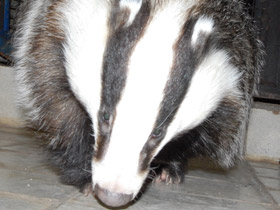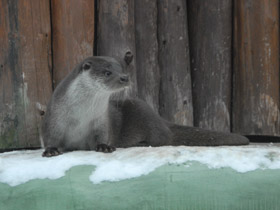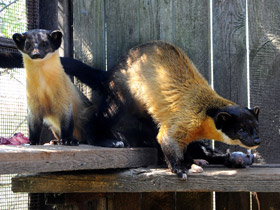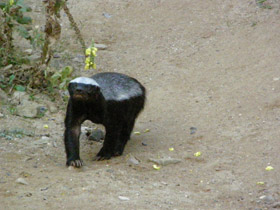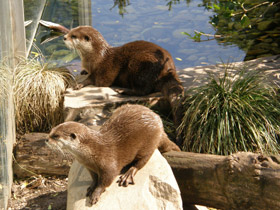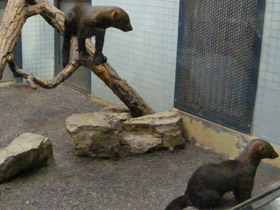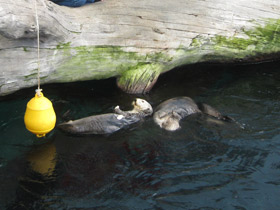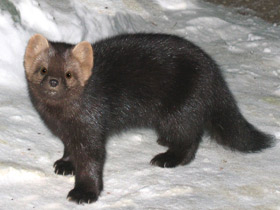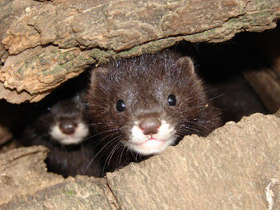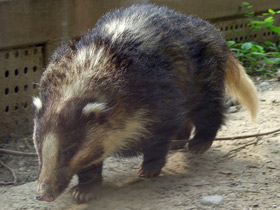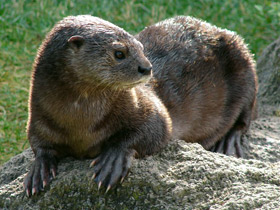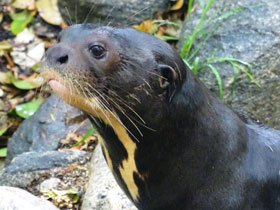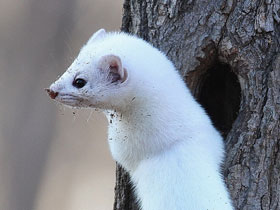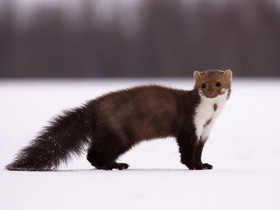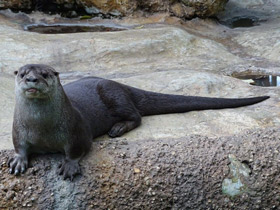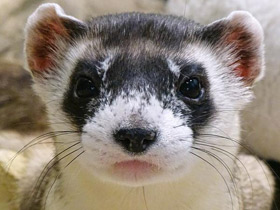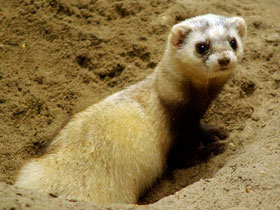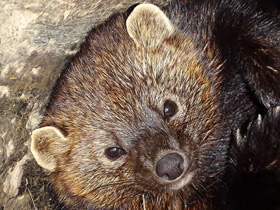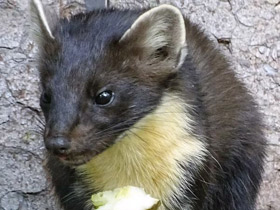The family Mustelidae
The Mustelidae (/mʌˈstɛlɪdiː/; from Latin mustela, weasel) are a diverse family of carnivorous mammals, including weasels, badgers, otters, martens, and wolverines. Otherwise known as mustelids (/ˈmʌstɪlɪdz/), they form the largest family in the suborder Caniformia of the order Carnivora with about 66 to 70 species in nine subfamilies.
Habitat area
Mustelidae are a family of mammals of the order Carnivora, both terrestrial and aquatic, inhabiting all continents except Oceania. Most are carnivorous in diet or are scavengers.
Mustelidae is one of the most species-rich families, with more than 50-60 small (the smallest of the order) or medium-sized predators. They include terrestrial, semi-aquatic and near-aquatic forms, differing greatly in body structure, mode of life and adaptive characteristics. Mustelids inhabit a wide variety of landscapes, from tundra to deserts and from foothills to alpine meadows in all parts of the world except Antarctica.
Appearance and social behaviour
The torso of Mustelidae is usually strongly elongated, flexible, the legs are short, and the fur is thick and fluffy, with a soft undercoat. The lushness and density of the hair varies greatly from season to season. As a rule, breeders of this family lead a solitary territorial life, sometimes keeping families and very rarely forming small groups. They mark their territory with a special, secret pungent scent.
Lifestyle
Most Mustelidae are predators, their main prey being small mammals, but they also eat plant foods. They usually hunt at night or at dusk. Their sensory organs are more developed: hearing, and some also have a sense of smell. As a rule, these animals are sedentary and take refuge in dug holes.
Most of the species in this family are polygamous and are characterised by the so-called dormant gestation stage, in which the development of the embryo is temporarily suspended until conditions are favourable.
Human uses
Several mustelids, including the mink, the sable (a type of marten), and the stoat (ermine), possess furs that are considered beautiful and valuable, so have been hunted since prehistoric times. From the early Middle Ages, the trade in furs was of great economic importance for northern and eastern European nations with large native populations of fur-bearing mustelids, and was a major economic impetus behind Russian expansion into Siberia and French and English expansion in North America. In recent centuries fur farming, notably of mink, has also become widespread and provides the majority of the fur brought to market.
Evolution and systematics
The oldest known mustelid from North America is Corumictis wolsani from the early and late Oligocene (early and late Arikareean, Ar1–Ar3) of Oregon. Middle Oligocene Mustelictis from Europe might be a mustelid, as well. Other early fossils of the mustelids were dated at the end of the Oligocene to the beginning of the Miocene. Which of these forms are Mustelidae ancestors and which should be considered the first mustelids is unclear.
The fossil record indicates that mustelids appeared in the late Oligocene period (33 Mya) in Eurasia and migrated to every continent except Antarctica and Australia (all the continents that were connected during or since the early Miocene). They reached the Americas via the Bering land bridge.
The 68 recent mustelids (66 extant species) are classified into eight subfamilies in 22 genera:
- Subfamily Taxidiinae:
- Genus Taxidea:
- American badger, Taxidea taxus;
- Subfamily Mellivorinae:
- Genus Mellivora:
- Honey badger, Mellivorinae capensis;
- Subfamily Melinae:
- Genus Arctonyx:
- Northern hog badger, Arctonyx albogularis;
- Greater hog badger, Arctonyx collaris;
- Sumatran hog badger, Arctonyx hoevenii;
- Genus Meles:
- Japanese badger, Meles anakuma;
- Asian badger, Meles leucurus;
- European badger, Meles meles;
- Caucasian badger, Meles canescens;
- Subfamily Helictidinae:
- Genus Melogale:
- Vietnam ferret-badger, Melogale cucphuongensis;
- Bornean ferret-badger, Melogale everetti;
- Chinese ferret-badger, Melogale moschata;
- Javan ferret-badger, Melogale orientalis;
- Burmese ferret-badger, Melogale personata;
- Formosan ferret-badger, Melogale subaurantiaca;
- Subfamily Guloninae:
- Genus Eira:
- Tayra, Eira barbara;
- Genus Gulo:
- Wolverine, Gulo gulo;
- Genus Martes:
- American marten, Martes americana;
- Pacific marten, Martes caurina;
- Yellow-throated marten, Martes flavigula;
- Beech marten, Martes foina;
- Nilgiri marten, Martes gwatkinsii;
- European pine marten, Martes martes;
- Japanese marten, Martes melampus;
- Sable, Martes zibellina;
- Genus Pekania:
- Fisher, Pekania pennanti;
- Subfamily Ictonychinae:
- Genus Galictis:
- Lesser grison, Galictis cuja;
- Greater grison, Galictis vittata;
- Genus Ictonyx:
- Saharan striped polecat, Ictonyx libycus;
- Striped polecat, Ictonyx striatus;
- Genus Lyncodon:
- Patagonian weasel, Lyncodon patagonicus;
- Genus Poecilogale:
- African striped weasel, Poecilogale albinucha;
- Genus Vormela:
- Marbled polecat, Vormela peregusna;
- Subfamily Lutrinae (otters):
- Genus Aonyx:
- African clawless otter, Aonyx capensis;
- Asian small-clawed otter, Aonyx cinerea;
- Congo clawless otter, Aonyx congicus;
- Genus Enhydra:
- Sea otter, Enhydra lutris;
- Genus Lontra:
- North American river otter, Lontra canadensis;
- Marine otter, Lontra felina;
- Neotropical otter, Lontra longicaudis;
- Southern river otter, Lontra provocax;
- Genus Lutra:
- Eurasian otter, Lutra lutra;
- Hairy-nosed otter, Lutra sumatrana;
- † Japanese otter, Lutra nippon;
- Genus Hydrictis:
- Spotted-necked otter, Hydrictis maculicollis;
- Genus Lutrogale;
- Smooth-coated otter, Hydrictis perspicillata;
- Genus Pteronura;
- Giant otter, Pteronura brasiliensis;
- Subfamily Mustelinae (weasels, ferrets, and mink):
- Genus Mustela:
- Mountain weasel, Mustela altaica;
- Stoat (Beringian ermine), Mustela erminea;
- Steppe polecat, Mustela eversmannii
- Domestic ferret, Mustela furo;
- Haida ermine, Mustela haidarum;
- Japanese weasel, Mustela itatsi;
- Yellow-bellied weasel, Mustela kathiah;
- European mink, Mustela lutreola;
- Indonesian mountain weasel, Mustela lutreolina;
- Black-footed ferret, Mustela nigripes;
- Least weasel, Mustela nivalis;
- Malayan weasel, Mustela nudipes;
- European polecat, Mustela putorius;
- American ermine, Mustela richardsonii;
- Siberian weasel, Mustela sibirica;
- Back-striped weasel, Mustela strigidorsa;
- Genus Neogale:
- Amazon weasel, Neogale africana;
- Colombian weasel, Neogale felipei;
- Long-tailed weasel, Neogale frenata;
- American mink, Neogale vison;
- †Sea mink, Neogale macrodon.
Fossil mustelids Extinct genera of the family Mustelidae include:
- Brachypsalis;
- Chamitataxus;
- Corumictis;
- Cyrnaonyx;
- Ekorus;
- Enhydriodon;
- Eomellivora;
- Hoplictis;
- Megalictis;
- Oligobunis;
- Plesictis;
- Sthenictis;
- Teruelictis;
- Trochictis.

















